Compass Plant Prairie Perches
Essay and photos of an iconic prairie plant and perching songbirds
I have long had an affinity for compass plant (Silphium laciniatum). My first experiences with this native prairie species was while conducting a work-study project that had me making regular trips to Doolittle Prairie near Ames during my senior year at Iowa State University. The assignment was to trek through the fall prairie and take counts and measurements of blossoms, stems, and the large, lobed, sandpaper leaves. I then plucked off the seed heads, took them home, and separated and counted the hundreds (perhaps thousands) of viable and nonviable seeds. It was largely a tedious task, but it gave me up-close and personal experience with these tallest of prairie flowers, and took me into Iowa prairie in 1984, making me “prairie before being prairie was cool”.
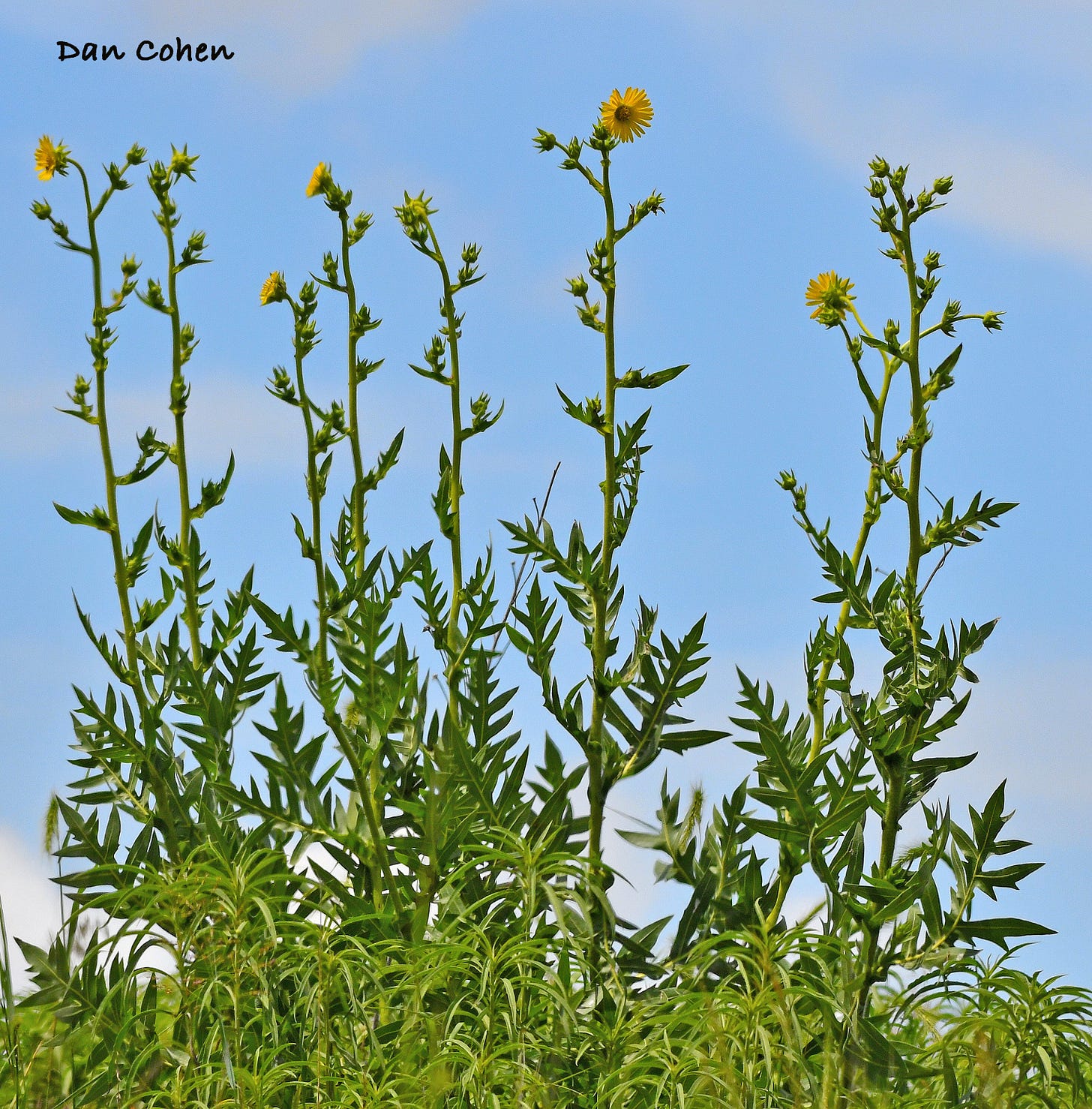
The genus Silphium includes compass plant, rosinweed and cup plant which have similar yellow flowers, but only compass plant has deeply incised leaves that are large at the base (perhaps 16 inches), getting smaller further up the stem. The basal leaves generally align north-south (flat surfaces facing east-west), giving the plant its name. This is thought to be an adaptation to help the plant reduce exposure to the hot prairie sun. The stems are sturdy, erect, rough, and sometimes sticky to the touch, and support yellow blooms starting midway up the plant to the tip that may be more than ten feet high. The showy yellow flower heads range from two to five inches in diameter and are set in large, hairy-tipped, green bracts. In winter, the stems bow and bend, but often do not break, continuing to provide raised bird perching platforms into the following spring and early summer when the stems of new growth take over.
Looking over a late July prairie, compass plants stand head and shoulder above the prairie. They are arguably the iconic prairie flower, both in appearance and suitability to the prairie landscape. The plant is famous for taking its time sending down deep roots, sometimes reaching 15 feet. It may not bloom until its third year or later, preparing a root mass to help the plant survive fires and access water in times of drought. It is tough, coarse, and persistent, just like the prairie itself, and similar to the image of plains Indians or pioneer settlers. Individual plants can live up to a hundred years. Although tough and resilient, compass plant had to beat the odds as nearly all the original Iowa prairie succumbed to the modern agricultural landscape. The same is true of prairie wildlife, including birds such as bobolinks, meadowlarks, dickcissels, Henslow’s sparrows, and sedge wrens, which now are listed as being Species of Greatest Conservation Need in Iowa. Only about one-tenth of one percent of original prairie remains. Protecting the remnants and planting new “constructed prairies” have been key to preserving compass plant, grassland birds, and other elements of our prairie heritage.
“What a thousand acres of Silphiums looked like when they tickled the bellies of the buffalo is a question never again to be answered, and perhaps not even asked.”
- Aldo Leopold, contemplating the potential demise of bison and prairie, from A Sand County Almanac, 1949
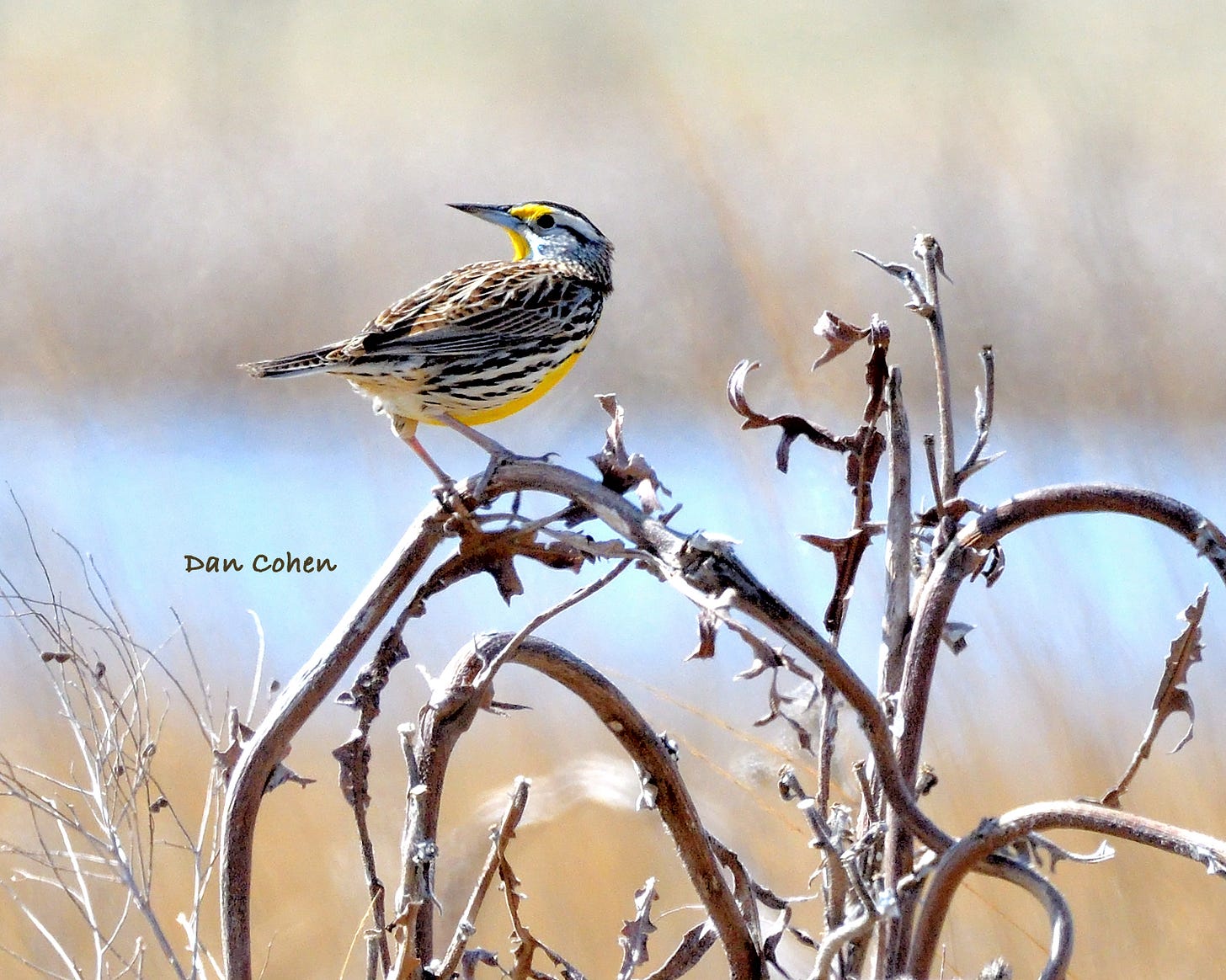
Flute-like, thin notes of eastern meadowlarks are the first songs to fill the prairie breeze as the first migratory songbirds return to Iowa prairies. These harbingers of spring arrive in prairies in mid-march, before any new growth has emerged, and immediately find platforms and perches from which to sing out their claims of property rights. Within the open expanses, beyond the fences and shrub lines, the old stalks of the previous year’s compass plants provide places for these birds to alight on raised sunlit stems, and announce their presence. Their yellow breasts and necks contrast with a bold, black V bib, providing a splash of color among the dead grasses of the March prairie.

As meadowlarks begin singing, another bird is in route, making its way on a long, arduous trip from South America, over land and sea, some 7,000 miles to Iowa and other regions in the north half of the United States and Canada. Bobolinks arrive as meadowlarks are already nesting. Males arrive before females and begin staking out positions on compass plant stems. These cheery, chuckling singers bring a new sound to the prairie. The showy males have stark black bodies with contrasting splashes of white on their wings and middle of back, and the back of their heads sport a cream-yellow color. They flutter over the now greening grasses of mid to late-May. Bobolinks tend to return to the same successful nesting areas, often with the same mate. Few females are seen until later in June, when they make appearances while tending their fledgling chicks, usually with their male escorts nearby. They are a mix of streaked, light, earth tones of yellow and brown, and are well camouflaged among the grasses and flowers. The chicks spend their first days roaming in the prairie thatch until they gain the ability to fly.
As bobolinks arrive, so do the most prolific of the compass plant singers. Dickcissels migrate almost as long a distance as bobolinks to reach nesting habitat in Iowa and elsewhere. They are not shy as they perch on the highest pedestals they can find and boldly sing their insect-like, dic dic ciss ciss ciss song. Males are especially colorful with a black bib contrasting with a yellow chest. They throw their heads back and sing loudly even as I approach. Dickcissels use last year’s compass plant stems through early summer, and then will be seen among the blossoms of new growth beginning in July. They are easy to spot as they fly around feeding on spiders, grasshoppers, and other numerous insects on summer prairie days.
Meadowlarks, bobolinks, and dickcissels are the most visible avian compass plant sentinels, but there are others. Song sparrows and eastern kingbirds love a good, elevated perch in most any landscape. Occasionally a diminutive sedge wren or Henslow’s sparrow will leave its thick ground habitat to hop up high for a more expansive view. Any grassland songbird may vie for a spot atop the mountain perch.




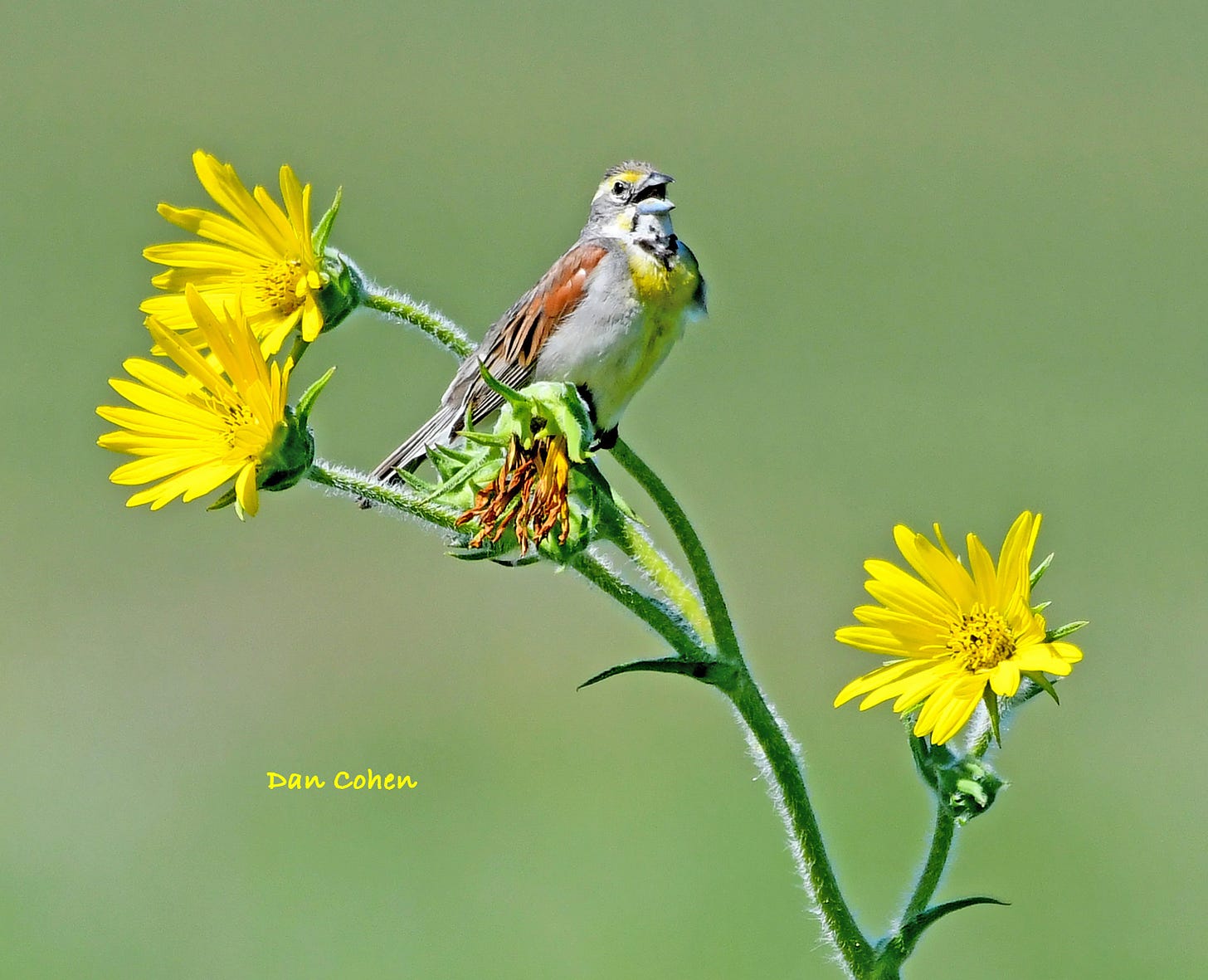
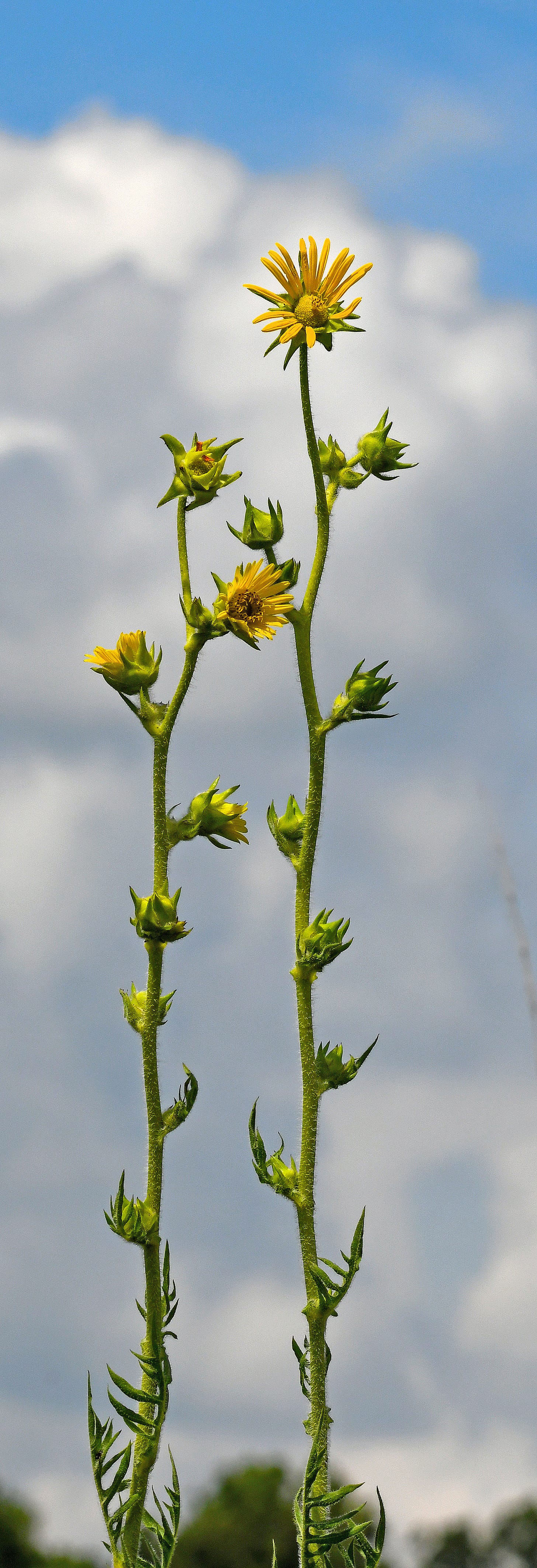
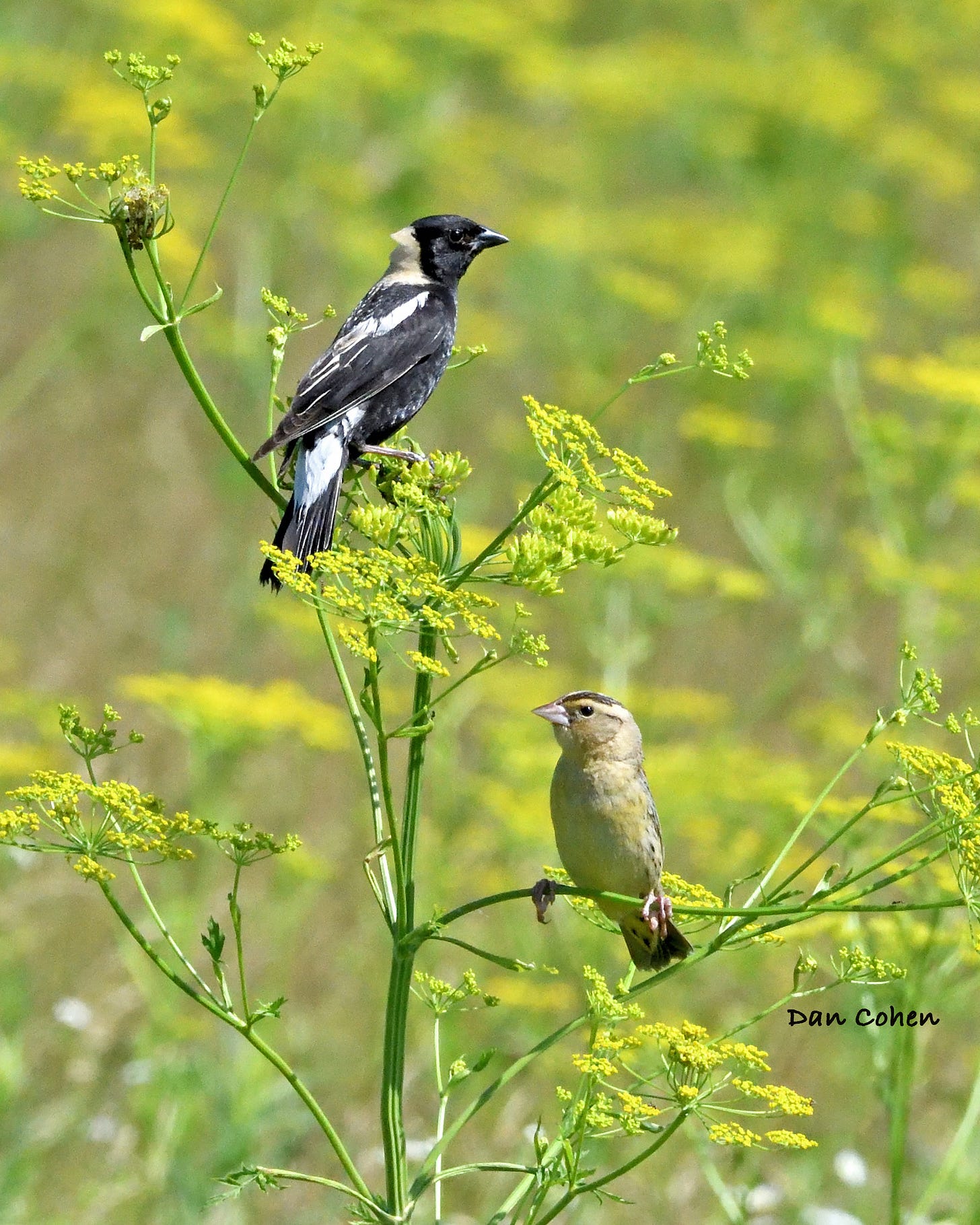


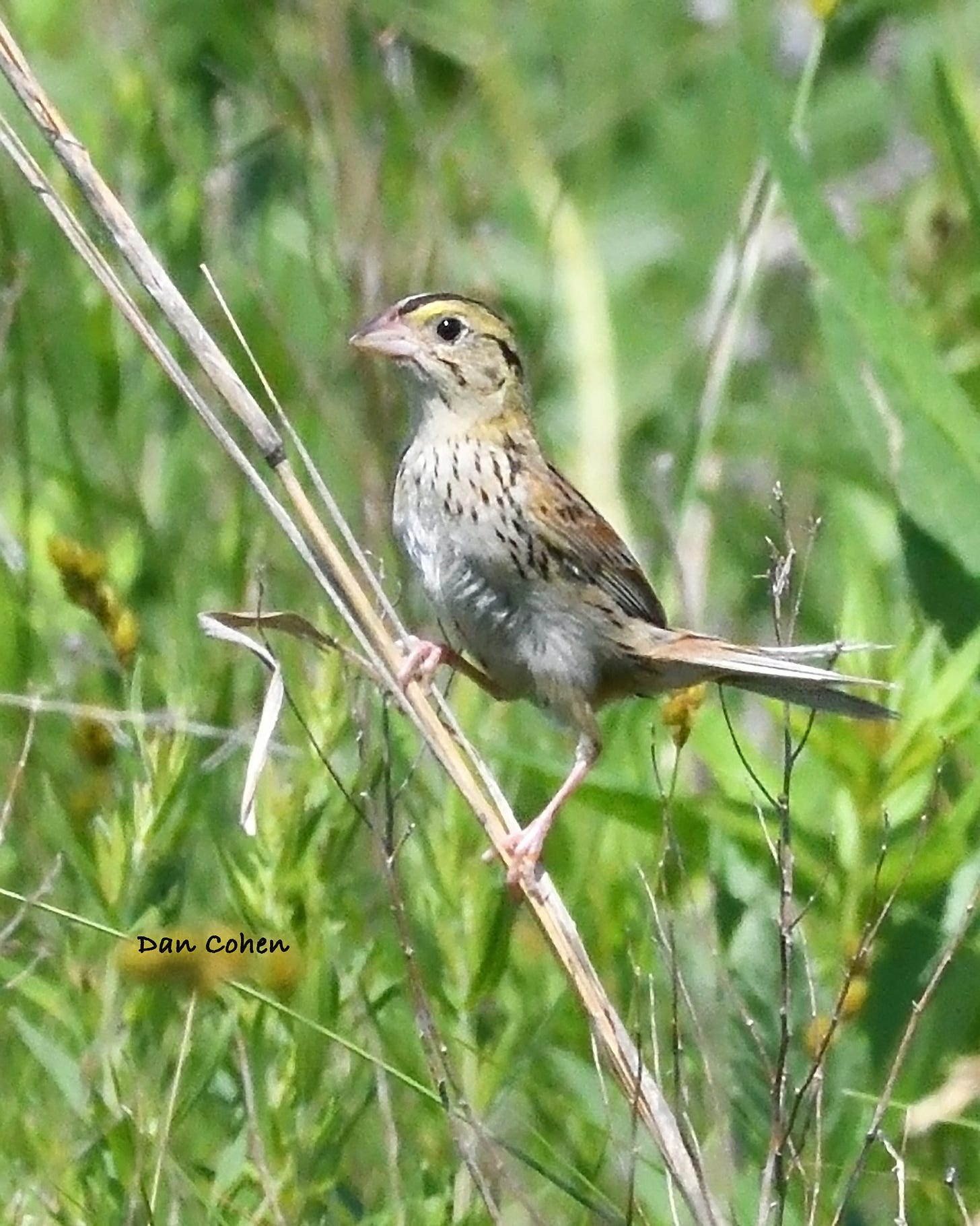

Also a favorite plant of mine. Your photography captures the grain of being there. As for ISU connections, I did an MA in cultural anthropology there ('93), and later a PhD in the same (U Minnesota - Twin Cities, 2001). Twisting an old angler's saying, a bad day outdoors is better than a good one inside.
Also - didn’t know you were an “Iowa Stater”. I did both my undergrad (Biology, ‘78) and most of my faculty career there.